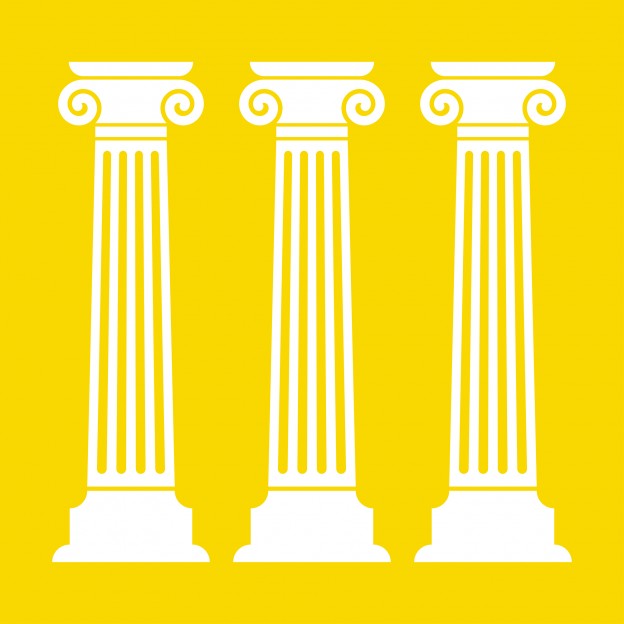Every new project should be seen as an opportunity to create something exceptional. We should always aspire at changing the world, or at least a piece of it. Sometimes, coming up with brilliant ideas is the easy part. Execution on the other hand can be a different story. An idea can only be as good as the product that comes out of it and making it happen is the biggest challenge, whether it is the will or the means to do it.
Ensuring that a product will meet expectations starts with establishing a good foundation or key ingredients that will make it deliver an outstanding experience. Beyond referring to heuristics for sanity checks, at the beginning of the definition phase I always establish key experience pillars, a sort guideline that will make sure we keep the product aligned with user goals as well as business objectives.
A pillar is actually a constancy, a persistent stream maintained during an entire flow. The intensity of the support layer may fluctuate during a given sequence but you have to look at them as steadily present and always connected to all other layers. I have often used the same 4 pillars, simply because they form a great base for many engagement program or interactive platforms. I tend to divide them into 2 categories: “Passive” for the more reflective or analytical part of the experience, and “Active” for the more interactive or task-based aspect of the sequence.

In the “Passive” group, “Inform” and “Inspire” are a great pair complementing one another. First off, informing users and providing relevant data is essential, but when paired with a motivational value like “Inspire”, it creates a very powerful communication instance. In the “Active” group, “Enable” provides the means to execute things successfully and be in a position of power and control, while “Engage” gives opportunities to share thoughts or be part of the conversation.
In the end, it’s really up to you to determine which pillars are necessary. In some cases, I have used an expanded set to reflect specific business goals or user needs. For instance, as part of a complex customer journey that included a steep learning curve, I felt the need to offer constant support on an educational level as well as customer assitance. The pillars were also divided in “Passive” and “Active” planes but were also inserted other axes reflecting the customer journey such as motivation or support. The way you establish groupings or alignments depends on the challenge you are working on.

Having these pillars is a base to start defining how the customer journey or experience model will take shape. Mapping this journey is explained in another post but the pillars are a foundation to this sequential

Establishing experience pillars really helps design a program that delivers value and meaning. It guides the definition phase, keeping the team aware of what is important for the target audience and what ensure we meet the business objectives.
__________________________________________
Marco Gervasio
Reach me: marco@sequential.ca





